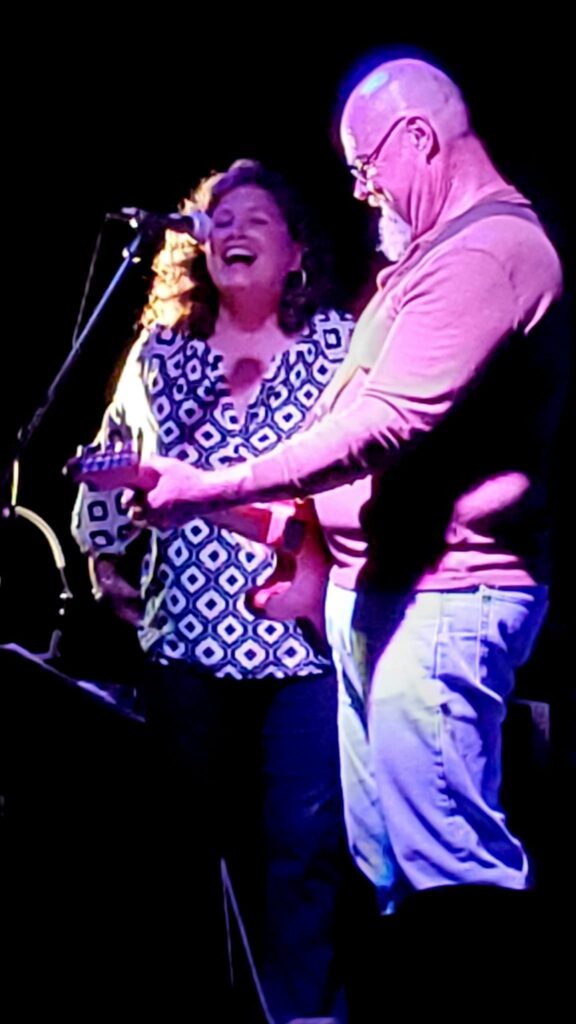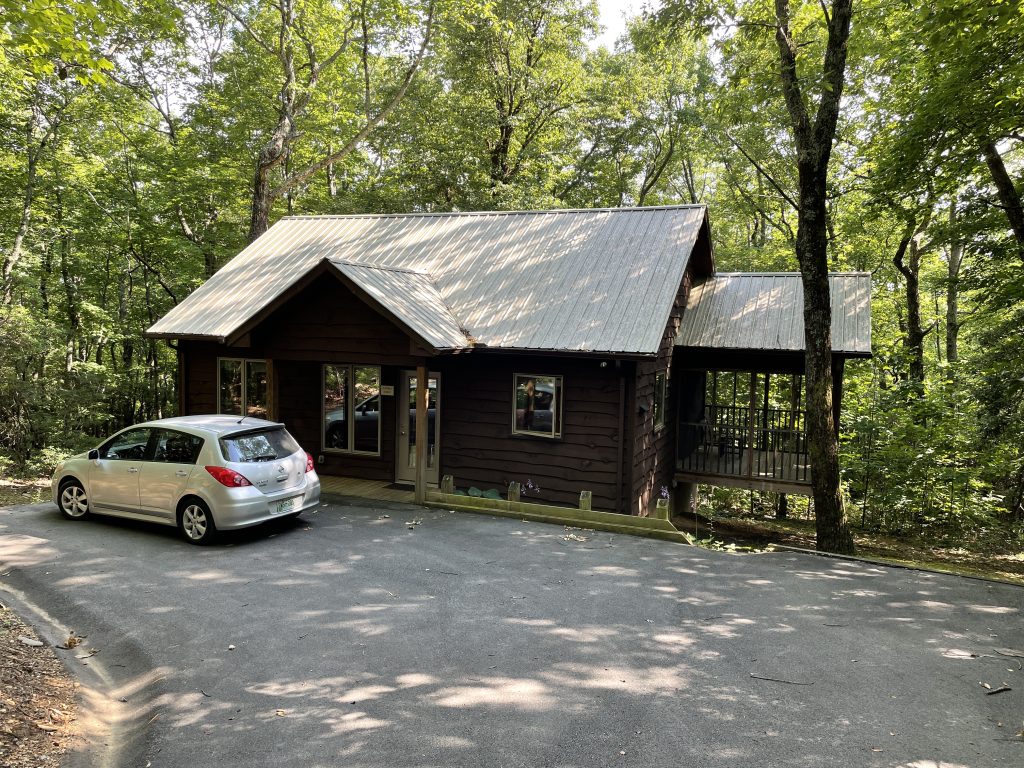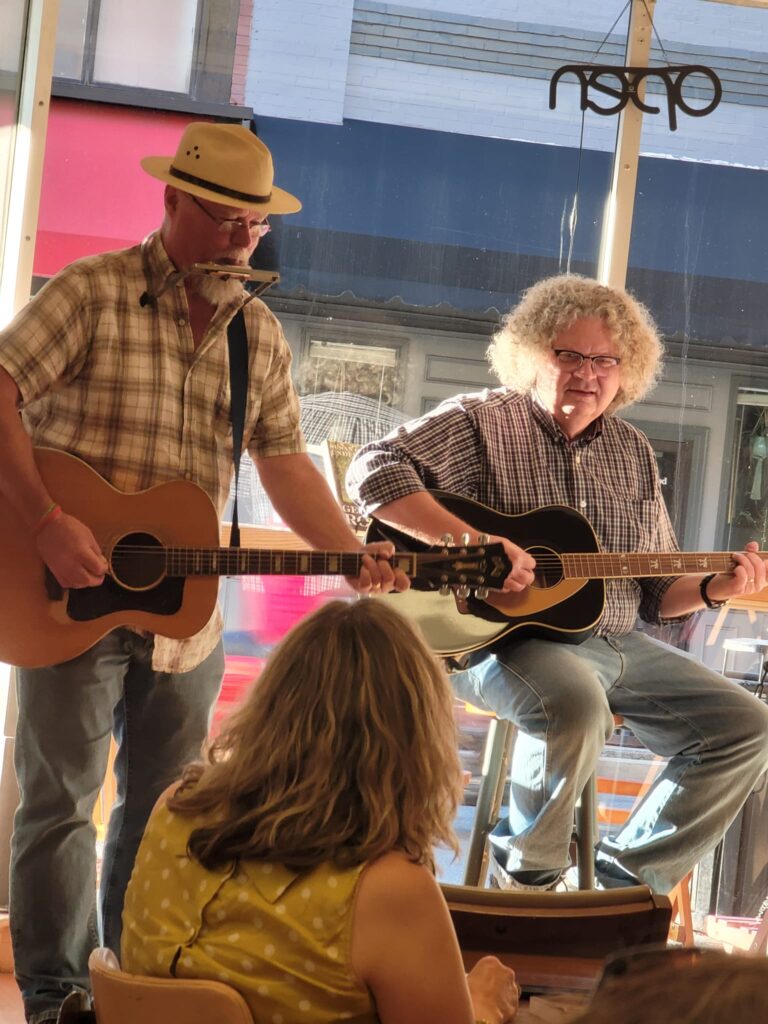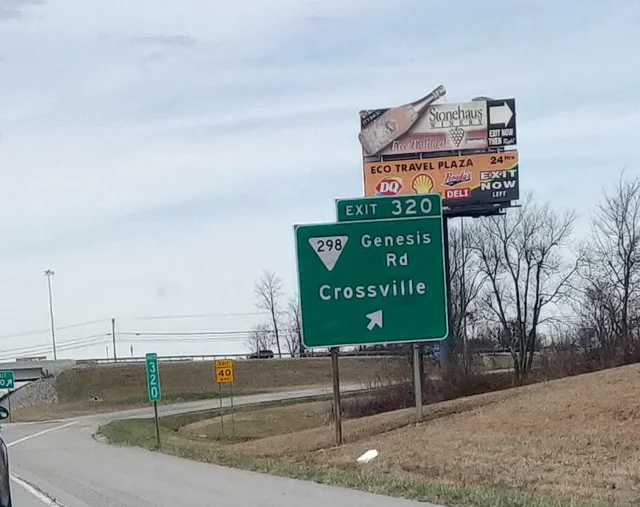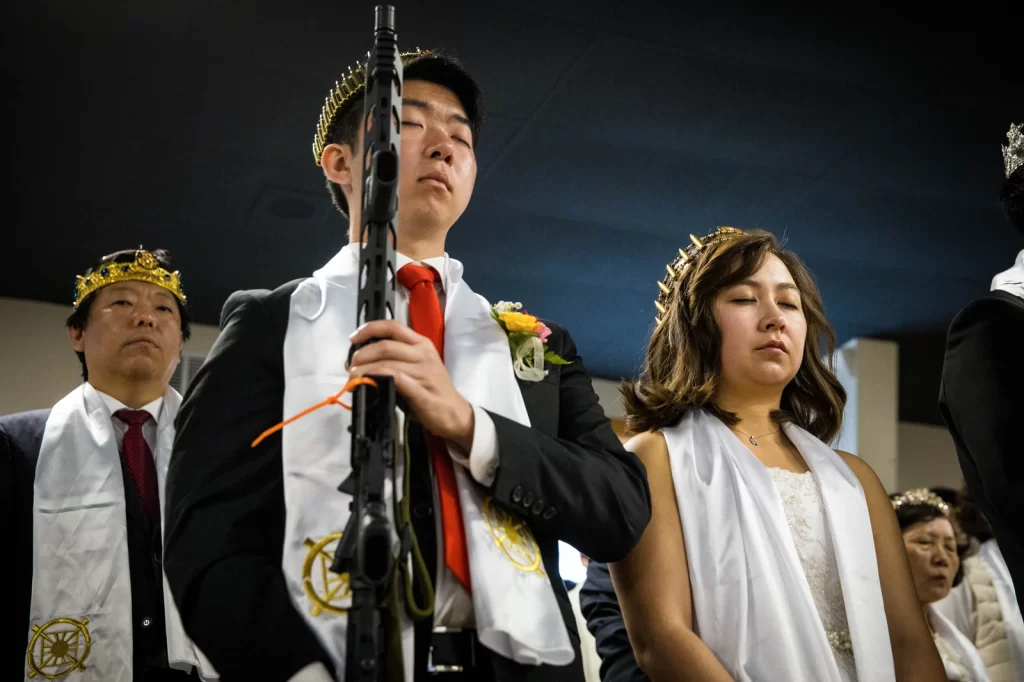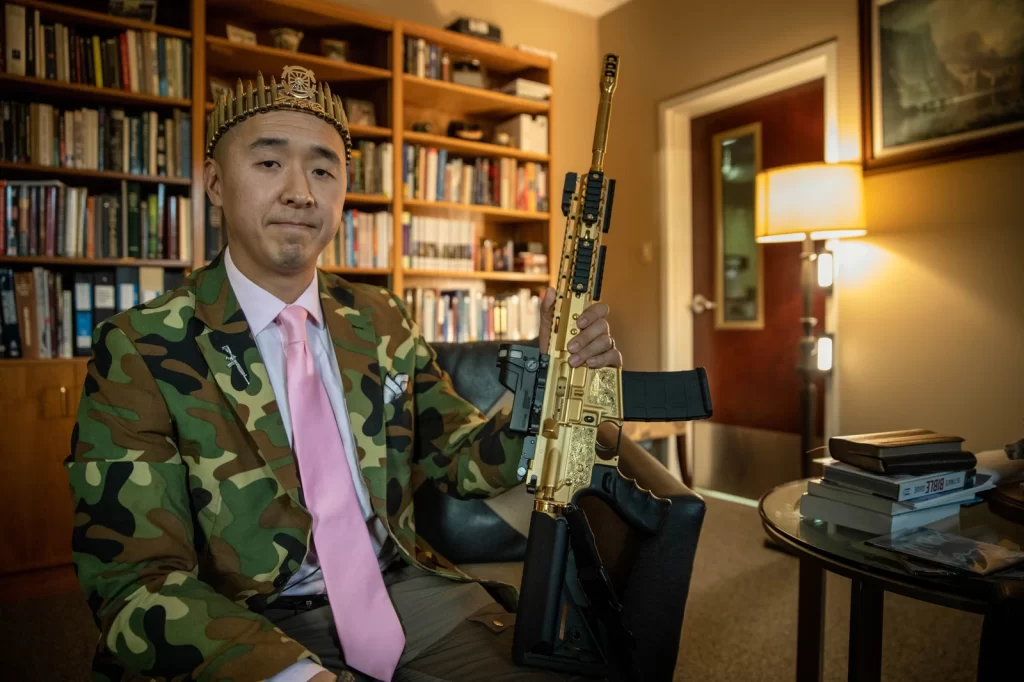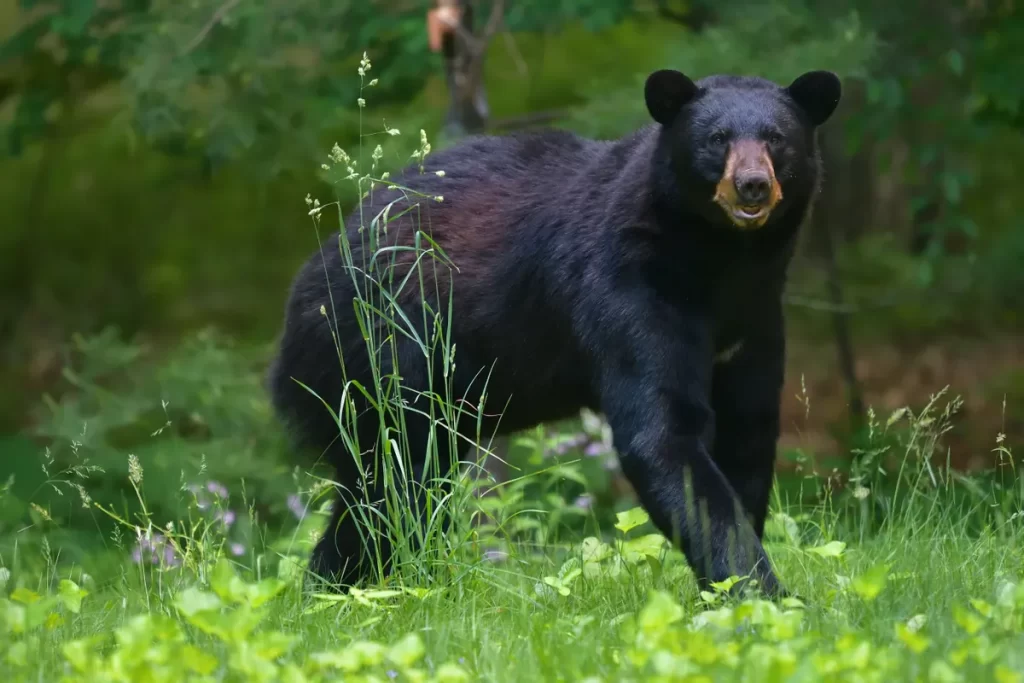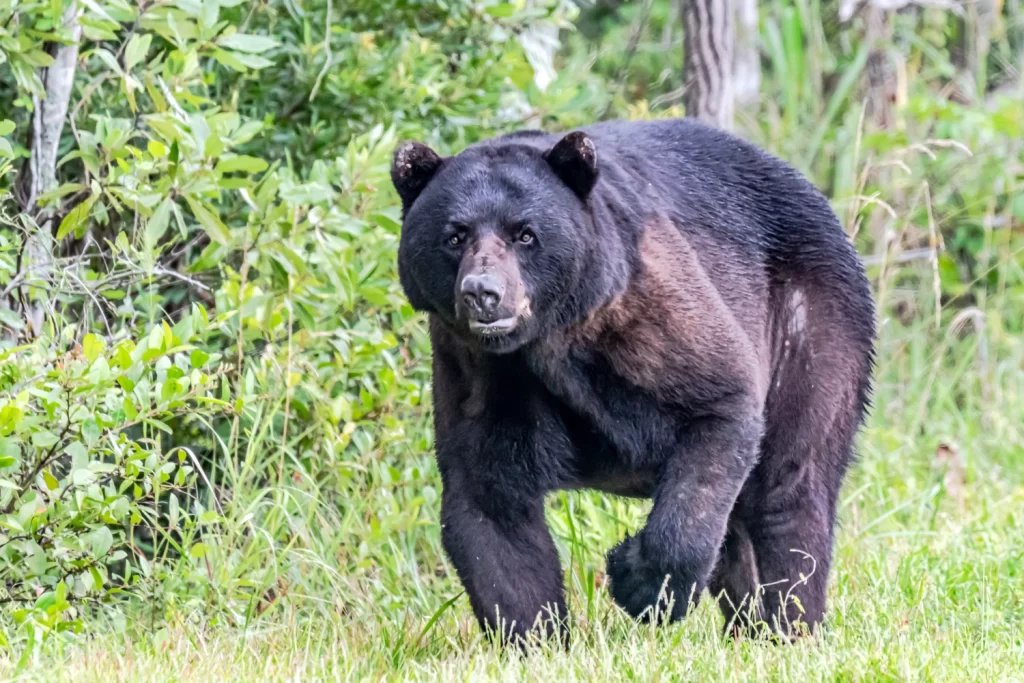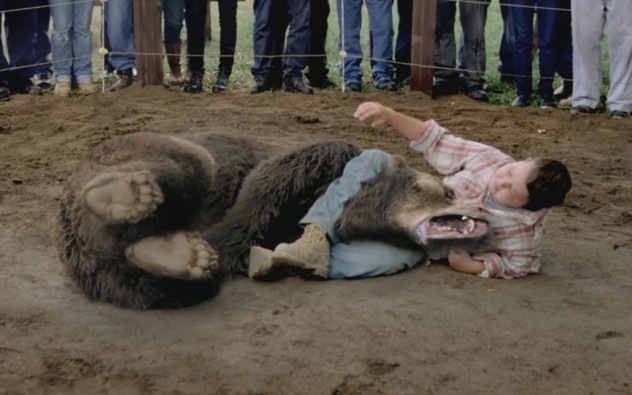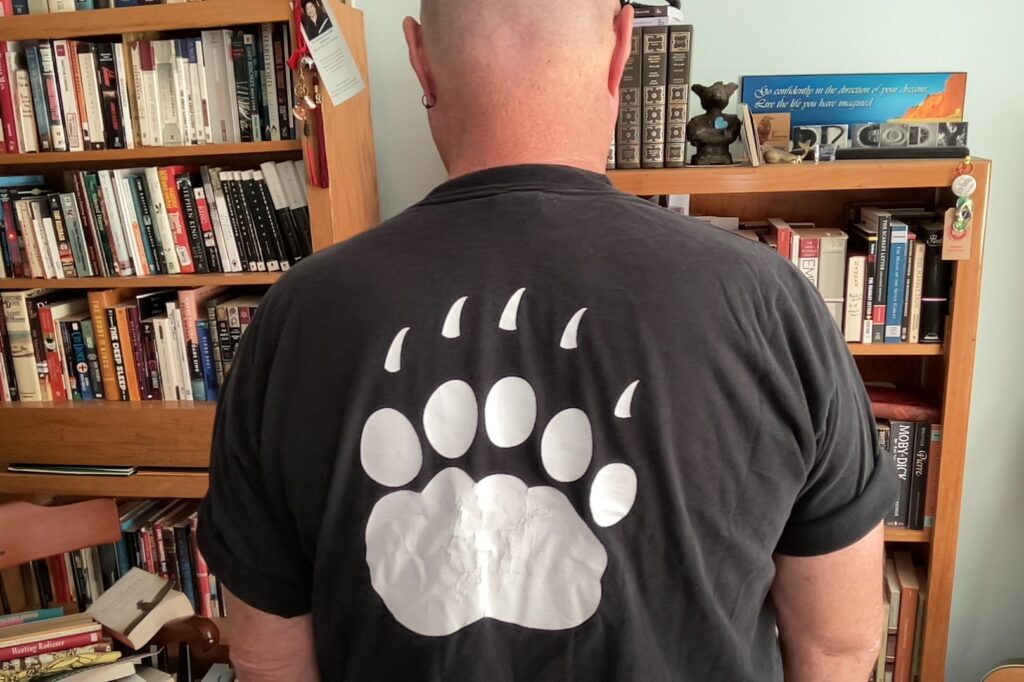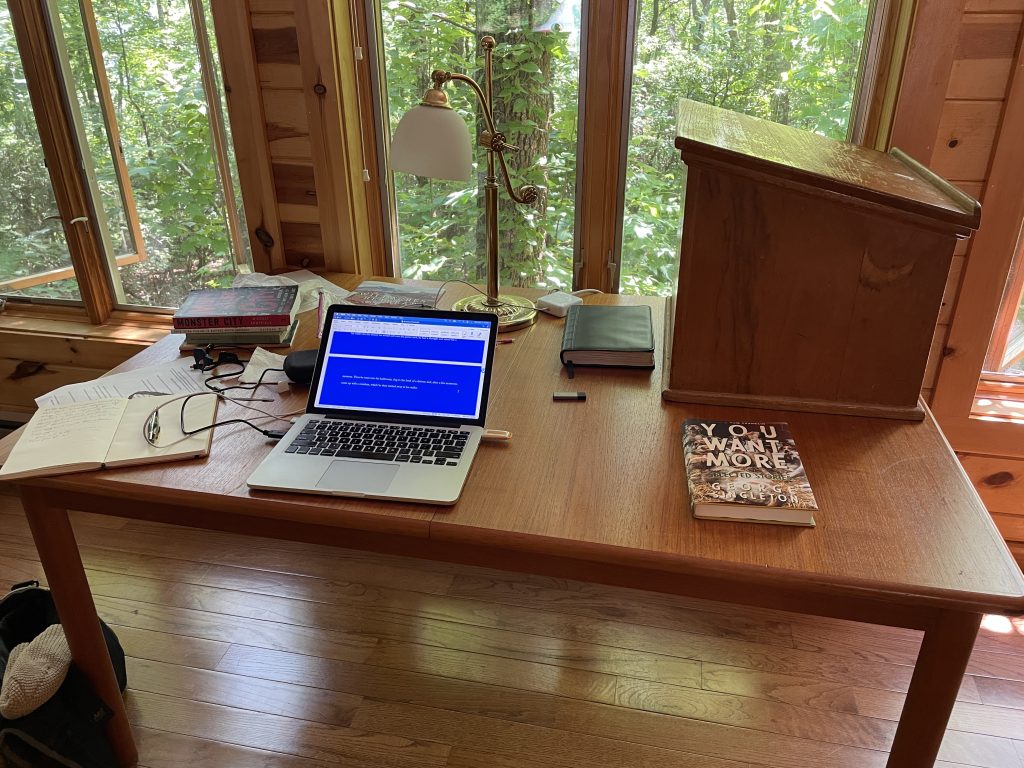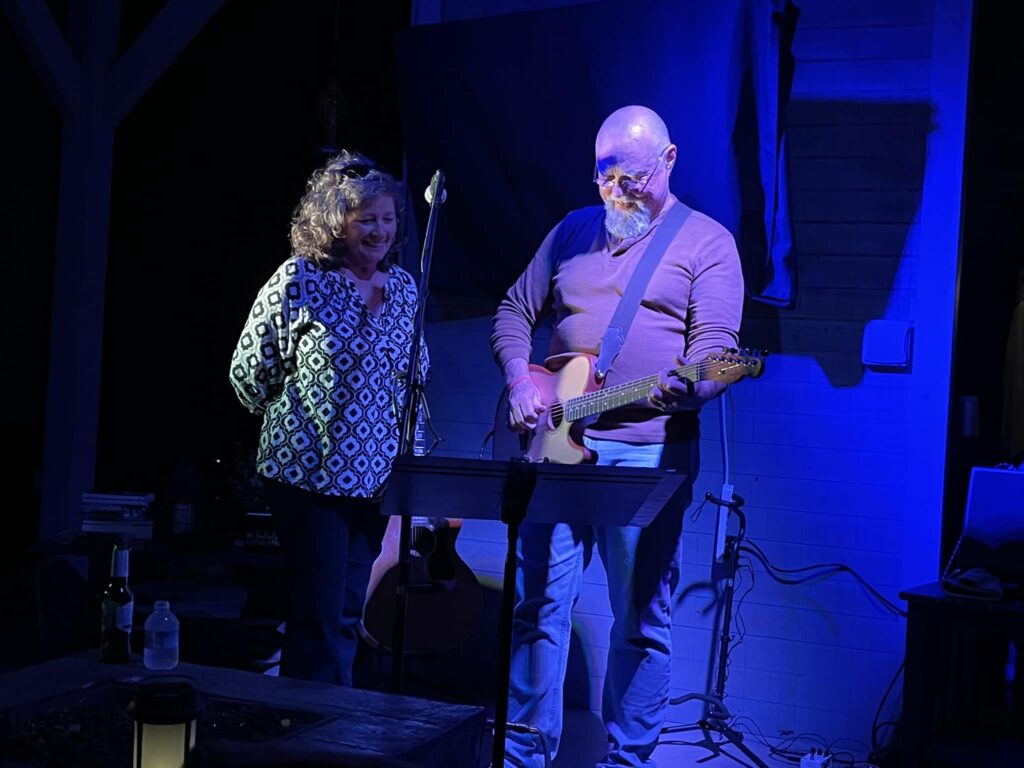
Just a little over two weeks ago, Leesa and I celebrated our 33rd wedding anniversary (2 September 1989). We were married in the old Methodist church (pictured on the cover of A Twilight Reel) in Walnut, NC. My reverend uncle Joe “Mack” Reeves married us. The wedding party consisted of Leesa, son Lane, and me. My friend Phil Madeira played piano, and my uncle Cloice Plemmons was fond of remembering that “those old church walls had never heard the piano played like that.” Leesa walked down the aisle to Phil’s rendition of “Someone to Watch Over Me.” When she reached the front, I sang our wedding song—“Soulmates.” The song was less than twelve hours old when we married at eleven o’clock that Saturday morning.
I’m not sure how much of the song I had written before I sat down to finish it late on Friday night the 1st, after the fun and beautiful rehearsal event—can’t remember if we actually rehearsed anything or not—my folks hosted at the end of the long yard at the old homeplace in Walnut. Many aunts and uncles and cousins were there, along with many friends from Asheville and Nashville and elsewhere. They returned the next morning for the eleven o’clock wedding and then joined us for the reception under the beautiful blue skies and still-green trees above Glory Ridge.
Here’s a somewhat embarrassing but apropos story that is characteristic of our soulmateness. After the reception, we went to Asheville, to our hotel, where we hung out with our friends—mostly the ones who’d come from Nashville. At some point, Leesa and I went for supper to China Palace over by the Asheville Mall, where our friend Patrick was the manager. We took our leftovers back to the hotel and put them in our suite’s fridge. Next day, we were heading out for a long drive up the Blue Ridge Parkway. We first said goodbye to our friends, then loaded our car for the driving honeymoon, and put the Chinese leftovers in a trashcan beside the hotel’s little picnic area in the back. Before getting on the Parkway, we drove around in an attempt at finding some lunch, but we couldn’t decide on anything. Finally, Leesa said, “I’d really like to have my leftovers from last night.” I agreed, and we drove back to our hotel and looked in the trashcan. The food had been out of the fridge only thirty minutes or so, and the day wasn’t hot. And nobody had thrown any trash in on top of the Styrofoam containers, so, we them fished out of that trashcan and ate like hungry black bears down from the mountains and raiding the garbage. We leaned back and laughed and enjoyed ourselves!
Soulmates
We have wandered across the years and miles
In search of a clear direction,
While some tangled memories
Held a mysterious connection
To a corner of our hearts—
Whether together or apart—
Where love had waited patiently
From the first day of our history.
Soulmates—
Sold out to fate.
What happens from now on
Was planned before the dawn of time.
Soulmates—
So worth the wait—
Each the other’s gift from heaven
Like hand to glove or rhythm to a rhyme.
Every true heart has the dream of flying
Without the fear of falling.
We stand on this ledge in answer
To love’s higher calling.
Gold to blue to gray
To black with night and rain—
It’s always the same big sky,
And every inch is ours to fly.
Soulmates—
Sold out to fate.
What happens from now on
Was planned before the dawn of time.
Soulmates—
So worth the wait—
Each the other’s gift from heaven
Like hand to glove or rhythm to a rhyme.
When real life seems
To steal the dream,
Don’t let it break your heart,
’Though these bodies tight to this Earth cling.
We can still lean back in laughter.
We can still take to the sky,
’Cause these hearts have earned their wings.

